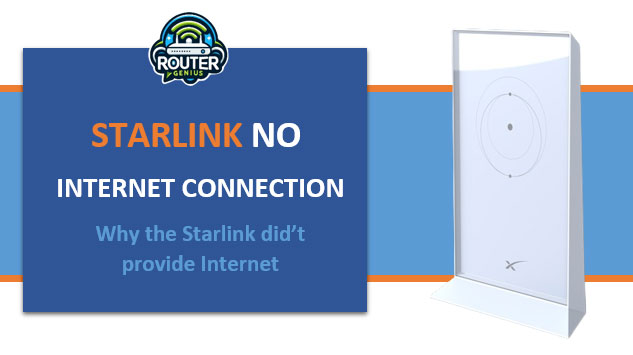SpaceX’s Starlink satellite internet promises high-speed broadband anywhere on the planet, but for many customers, there is often the frustration of the Starlink not working or losing connection. In this article, we will explore some of the common reasons why you may experience starlink no internet connection on your Starlink and provide some troubleshooting steps to get it back up and running.

Introduction
Starlink uses a constellation of low Earth orbit satellites to beam high-speed internet to customers worldwide. This eliminates the need for traditional internet infrastructure like telephone lines or cables. However, being a satellite-based system also introduces some unique technical challenges compared to terrestrial networks. Factors like weather conditions, obstructions, and satellite visibility can all potentially cause intermittent disruptions or complete loss of connectivity.
While starlink connected but no internet aims to provide consistent service, outages will occur from time to time for various reasons. The key is understanding why it happened and what steps to take to resolve it. With some troubleshooting, you should usually be able to get your Starlink back online quickly.
Possible Reasons for No Internet on Starlink
Here are some of the most common issues that starlink says no internet connection could result in no internet connection with your Starlink dish:
Obstructions
Anything obstructing the dish’s view of the sky, even temporarily, can cause connectivity drops. Large trees, buildings, hills, and other structures could all potentially block signals from satellites passing overhead. Ensure there are no permanent obstructions above the minimum elevation angles listed in the Starlink app.
Inclement Weather
Heavy rain, snow, fog, or other severe weather can degrade or attenuate the signal traveling between the dish and satellites. Thunderstorms in particular seem to commonly cause interruptions. Connection will usually resume once weather clears.
Satellites Not Visible
If no satellites are currently in view of your location, there is no way for the dish to connect. This often occurs briefly at dawn/dusk or during satellite maneuvers and outages typically only last a few minutes.
Equipment/Firmware Issues
Problems with the Starlink dish, power supply, WiFi router, or internal software/firmware could disrupt internet. Updates sometimes cause temporary interruptions too until rebooting.
Network Congestion
In very busy cells with high user density, network performance may degrade during peak usage hours due to congestion until more sats are launched.
Planned Maintenance
Rarely, SpaceX may schedule brief maintenance periods to perform Starlink software/hardware updates which could affect connectivity for short durations.
Troubleshooting Steps for Starlink Connection Problems
If your Starlink internet stops working, here are some things to check and try:
Check Obstructions
Manually move your Starlink dish around different positions and check the app’s obstruction detector. Try clearing any new obstructions that may have appeared.
Restart Equipment
Power cycle both the Starlink dish and WiFi router by unplugging them for 30 seconds then restarting. This resets any issues with electronics or software.
Update Firmware
Ensure you have the latest firmware installed on your Starlink. Open the app and it will automatically check for any needed updates.
Clear App Cache
Force close and clear cache from the Starlink app. Reopen it – this can help with minor glitches.
Check for Outages
Check the Starlink Twitter or service status page for any known regional or widespread outages that may be ongoing.
Contact Support
If issues persist longer than 30 minutes, contact Starlink support through the app or website for more assistance in diagnosing the root cause.
Common Troubleshooting FAQs
My Starlink dish is not finding any satellites. What should I do?
Make sure it isn’t obstructed with trees or buildings, has a wide view of the sky and the mount is properly aligned. It may also take a few minutes upon initial setup to acquire satellites. Wait patiently as it searches.
The signal strength is low – now there’s no connection. Why?
Low signal strength usually indicates obstructions blocking the dish’s line of sight. Check for and clear any new obstructions above the minimum elevation angles. Heavy rain/snow could also temporarily weaken signals.
My Starlink keeps disconnecting intermittently. What gives?
Temporary obstructions like tree branches swaying, birds, or other moving objects passing in front of the dish likely briefly blocking signals. Wireless interference from other devices can too sometimes. Minor obstructions may need clearing.
Why is my WiFi signal weak near my Starlink dish?
The WiFi router in the Starlink kit is specifically designed to have antennas pointing straight up at the dish to avoid interference. Its WiFi signal strength directly below and very close to it may be weaker, so place the router somewhere centrally located in your home if possible.
Conclusion
While outages will inevitably occur with any internet service from time to time, understanding potential causes and having some basic troubleshooting steps can help resolve connectivity issues with Starlink quickly in most cases. With satellite visibility, weather, and obstructions all playing a role, patience may also be required. But for those seeking high-speed broadband independent of existing infrastructure, Starlink continues making great strides towards reliable coverage wherever its users may be.

Leave a Reply